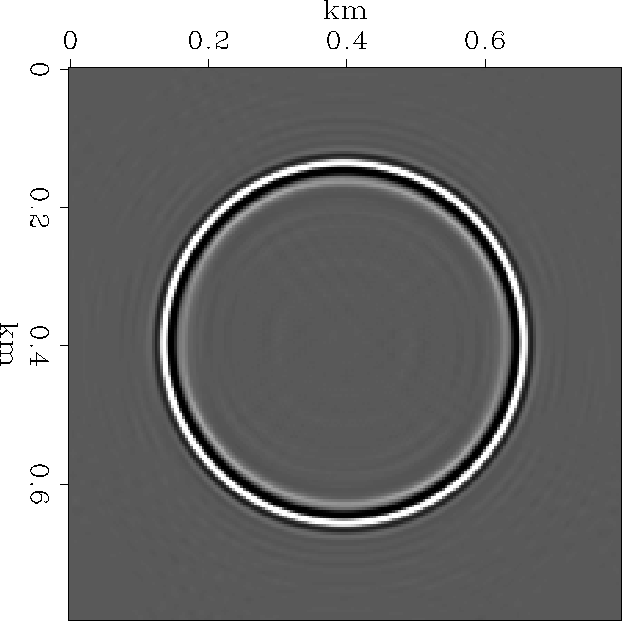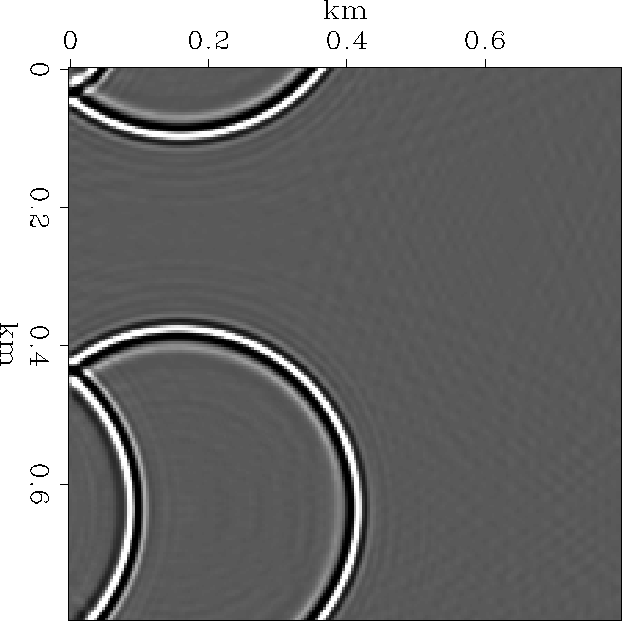




Next: Lateral velocity variations
Up: Helical boundary conditions
Previous: Polynomial division
A slice through the broad-band impulse response of the 45 equation is shown in Figure 1. As with the 2-D
implementation of the 45
equation is shown in Figure 1. As with the 2-D
implementation of the 45 equation, evanescent energy at high
dip appears as noise, and takes the form of a cardioid. This is never a
problem on field data, and has been removed from the depth-slice shown
in Figure 2.
Implicit migration with the full Laplacian, instead of a splitting
approximation, produces an impulse response that is azimuthally
isotropic without the need for any phase corrections.
equation, evanescent energy at high
dip appears as noise, and takes the form of a cardioid. This is never a
problem on field data, and has been removed from the depth-slice shown
in Figure 2.
Implicit migration with the full Laplacian, instead of a splitting
approximation, produces an impulse response that is azimuthally
isotropic without the need for any phase corrections.
Figure 3 shows the effects of the different boundary
conditions on the two spatial axes. The fast spatial axis (top and
bottom of Figure) have helical boundary conditions, and show
wrap-around. The slow spatial axis (left and right of Figure) has
a zero-value boundary condition, and hence is reflective.
For the examples in this paper, we set the `one-sixth'
parameter Claerbout (1985),  , and used the isotropic
nine-point Laplacian from equation (8).
, and used the isotropic
nine-point Laplacian from equation (8).
3Dtimeslice
Figure 2 Depth-slice of centered impulse response corresponding to a dip of
45 . Note the azimuthally isotropic nature of the
full implicit migration. Evanescent energy has been removed by
dip-filtering prior to migration. . Note the azimuthally isotropic nature of the
full implicit migration. Evanescent energy has been removed by
dip-filtering prior to migration.
|
|  |





3Dboundary
Figure 3 Depth-slice of offset impulse response corresponding to a dip of
45 . Note the helical boundary conditions on the fast spatial axis. . Note the helical boundary conditions on the fast spatial axis.
|
|  |










Next: Lateral velocity variations
Up: Helical boundary conditions
Previous: Polynomial division
Stanford Exploration Project
7/5/1998
![]() , and used the isotropic
nine-point Laplacian from equation (8).
, and used the isotropic
nine-point Laplacian from equation (8).

